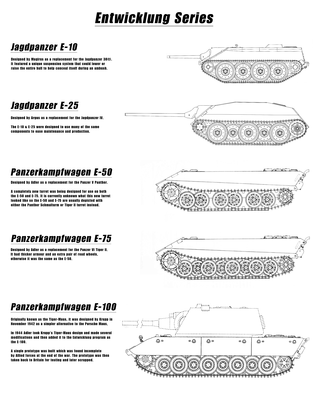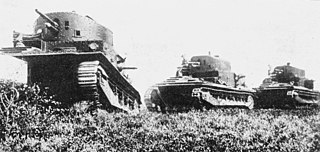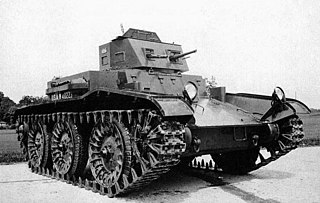
The M4 Sherman, officially medium tank, M4, was the medium tank most widely used by the United States and Western Allies in World War II. The M4 Sherman proved to be reliable, relatively cheap to produce, and available in great numbers. It was also the basis of several other armored fighting vehicles including self-propelled artillery, tank destroyers, and armored recovery vehicles. Tens of thousands were distributed through the Lend-Lease program to the British Commonwealth, Soviet Union, and other Allied Nations. The tank was named by the British after the American Civil War General William Tecumseh Sherman.

The BT tank was one of a series of Soviet light tanks produced in large numbers between 1932 and 1941. They were lightly armoured, but reasonably well-armed for their time, and had the best mobility of all contemporary tanks. The BT tanks were known by the nickname Betka from the acronym, or by its diminutive Betushka. The successor of the BT tanks was the famous T-34 medium tank, introduced in 1940, which would replace all of the Soviet fast tanks, infantry tanks, and light tanks in service.

The Panzer II is the common name used for a family of German tanks used in World War II. The official German designation was Panzerkampfwagen II.

Panzerkampfwagen VIII Maus was a German World War II super-heavy tank completed in July of 1944. As of 2025, it is the heaviest fully enclosed armored fighting vehicle ever built. Five were ordered, but only two hulls and one turret were completed; the turret being attached before the testing grounds were captured by the Soviet military.

The Christie suspension is a suspension system developed by American engineer J. Walter Christie for his tank designs. It allowed considerably longer movement than conventional leaf spring systems then in common use, which allowed his tanks to have considerably greater cross-country speed. The system was first introduced on his M1928 design, and used on all of his designs until his death in 1944.

The char 2C, also known as the FCM 2C, was a French post WWI heavy tank landship, later considered a super-heavy tank. It was developed during World War I but not deployed until after the war. It was, in total volume or physical dimensions, the largest operational tank ever made.

The M18 Hellcat is a tank destroyer used by the United States Army in World War II and the Korean War. Despite being equipped with the same main gun as some variants of the much larger Sherman tank, the M18 attained a much higher top speed of up to 55 mph (89 km/h) by keeping armor to a minimum, and using the innovative Torqmatic automatic transmission.

The Entwicklung series, more commonly known as the E-Series, was a late-World War II attempt by Nazi Germany to produce a standardised series of tank designs. There were to be standard designs in five different weight classes from which several specialised variants were to be developed. Design standardisation was envisioned to bring improvements over extreme complexity of previous tank designs that resulted in poor production rates and mechanical unreliability.

The T95 was an American prototype medium tank developed from 1955 to 1959. These tanks used many advanced or unusual features, such as siliceous-cored armor, new transmissions, and OPTAR fire-control systems. The OPTAR incorporated an electro-optical rangefinder and was mounted on the right side of the turret, and was used in conjunction with the APFSDS-firing 90 mm T208 smoothbore gun, which had a rigid mount without a recoil system. In addition, although the tanks were designed with a torsion beam suspension, a hydropneumatic suspension was fitted, and one of the tanks was fitted with a Solar Saturn gas turbine for demonstration purposes.

The T-44 was a medium tank developed and produced near the end of World War II by the Soviet Union. It was the successor to the T-34, offering an improved ride and cross-country performance, along with much greater armor. Designed to be equipped with an 85 mm main gun, by the time it was fully tested the T-34 had also moved to this weapon. Both tanks offered similar performance, so introducing the T-44 was not considered as important as increasing T-34 production. Fewer than 2,000 T-44s were built, compared to about 58,000 T-34s. Although the T-44 was available by the end of the war, it was not used in any battle. It was 1 ton lighter than the T-34-85 and slightly faster. The T-44 was heavily influential on the design of the T-54/55 Medium tank, most prominently lower hull and turret profiles. Also notable was the T-44-100, a 100mm D-10T-armed prototype, which would be the same 100mm gun mounted on the T-54/55, bar some minor changes.

The Vickers Medium Mark I was a British tank of the Inter-war period built by Vickers from 1924.

The Type 92 heavy armoured car, also known as the Type 92 cavalry tank, was the Empire of Japan's first indigenous tankette. Designed for use by the cavalry of the Imperial Japanese Army by Ishikawajima Motorcar Manufacturing Company, the Type 92 was meant for scouting and infantry support. The Type 92 was thin armored and lightly armed. It was called a sōkōsha in Japanese due to political sectionalism within the Japanese Army. The same device was used in America with the M1 combat car.

The Marmon-Herrington Combat Tank Light Series were a series of American light tanks/tankettes that were produced for the export market at the start of the Second World War. The CTL-3 had a crew of two and was armed with two .30 cal (7.62 mm) M1919 machine guns and one .50 cal (12.7 mm) M2 Browning machine gun. They were originally designed to be amphibious light tanks. They were rejected by the U.S. Marine Corps in 1939, but after the attack on Pearl Harbor they were exported and used as an emergency light tank.

The T29 Heavy Tank was an American heavy tank project started in March 1944 to counter the appearance of the German Tiger II heavy tank. The T29 was not ready in time for the war in Europe, but it did provide post-war engineers with opportunities for applying engineering concepts to artillery and automotive components.

The United States has produced tanks since their inception in World War I, up until the present day. While there were several American experiments in tank design, the first American tanks to see service were copies of French light tanks and a joint heavy tank design with the United Kingdom.

The T1 light tank was a United States Army light tank of the late 1920s and early 1930s that was only built in prototype form. The tank was an Army design built by James Cunningham, Son and Company. Introduced in 1927, it was developed up through 1932 as a series of modified versions. The tank was never mass-produced, nor was it ever used in combat.

T7 combat car was a prototype United States light tank design of the interwar period. It could run on rubber-tired wheels on roads or mount tracks for cross-country use. Although adequate in some areas, it lacked armament compared to contemporary vehicles and the project was cancelled after only one was built.

Tanks have been employed by the military forces in Italy since their first use in World War I. They have had continued use in wars after and are still used through the modern day. The C1 Ariete is the current main battle tank of the Italian Army.

The Christie M1931, known as the Combat Car, T1 in US Cavalry use and Medium Tank, Convertible, T3 in Infantry branch, was a wheel-to-track tank designed by J. Walter Christie for the United States Army using Christie's ideas of an aero-engine and the novel Christie suspension to give high mobility.
The AMX 40 was a proposed French cruiser tank. It was intended to replace the SOMUA S35 and S40 tanks. The tank never went beyond design stage after the Fall of France.




















